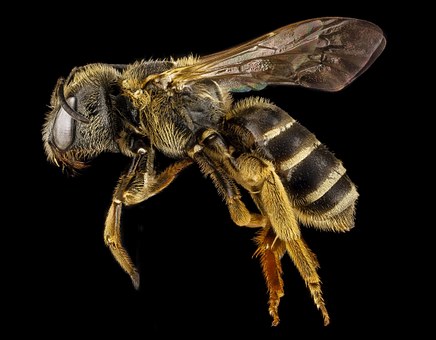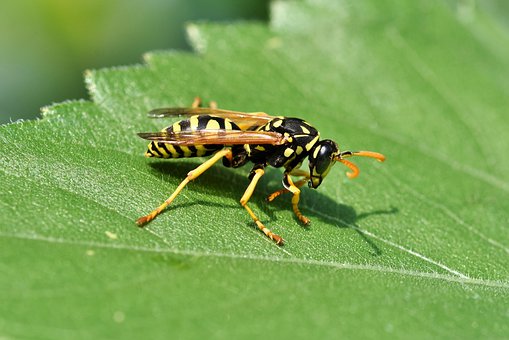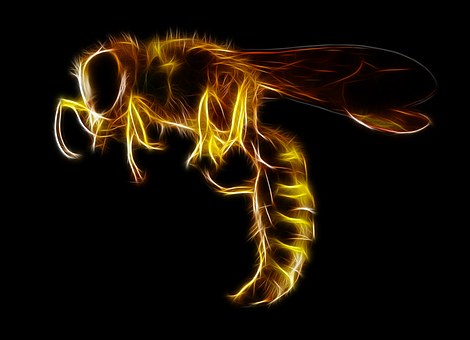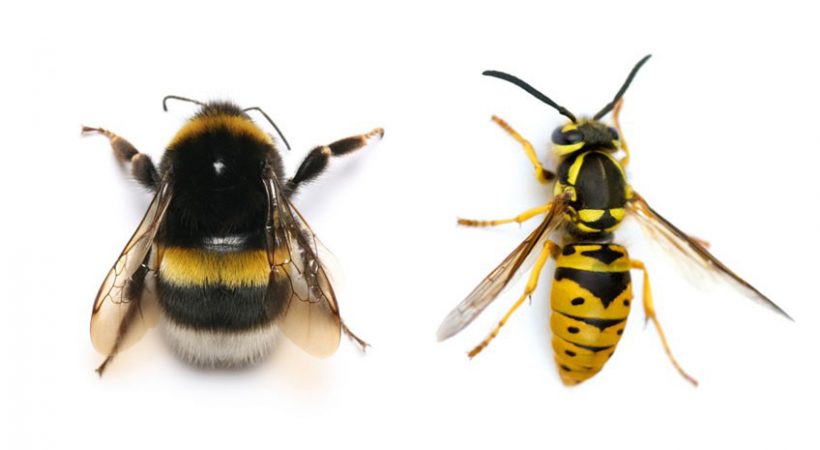Bees are flying insects and are related to ants and wasps. There are about 16,000 species of bees. The best-known species are western honey bees because they produce the widely known honey and beeswax. Bees and wasps look almost similar but on a closer look, they are different.
Bees and wasps could also be mistaken for a European hornet for their peculiar similarities. The European hornet is a large brown and orange insect with dark wings one and a half (11/2) inch long. Like bees and wasps, it stings when threatened in or outside its nest. More like a wasp when in danger produce pheromones to alert the rest of its family, hornets also work together to defend their nest against anyone who comes too close to it. They are also predators that capture large insects such as bees, grasshoppers, to feed their developing larvae in the nest.
Comparison between bees and wasps
- Bees are long and fat with two pairs of wings and often brightly colored. Wasps are long and thin however having dangling legs, two pairs of wings and could be brightly colored, too, like bees.
- Bees are less aggressive while the wasps are more aggressive.
- Bees are pollinators and do not usually prey on other insects. Bees as pollinators mean that they collect pollen and sip on nectar. The queen bee eats Royal Jelly – a substance like nectar that transforms them from a normal bee to a queen bee. Wasps are predators. Predators eat other insects. Flies, caterpillars, ants are some of the insect’s wasps eat but sometimes they will feed on nectar, too.
- The abdomen of the bees is round. Wasps have a cylindrical abdomen.
- Bees have hairy bodies and legs. Wasps have a smooth body and legs.
- Bees live in geometric wax hives. Beehive’s internal structure is packed with matrix hexagonal cells made of beeswax called a honeycomb. The closely made cells store food (honey and pollen) and house eggs, larvae and pupae. Wasps live in papery nests. That is why umbrella wasp – a species of wasp – is also called paper wasp. Many wasps create a paper-like substance from wood pulp softened by chewing and mixing with saliva. The pulp is used to make combs with cells for brooding.
- Caves, hollowed trees, and at times ceiling or wall in human houses are nesting sites for bees. Wasps dig in the soil, plant stems, hollowed trees, or a mud construction on trees and houses for their nest.
- The average lifespan of a worker bee is 5 to 6 weeks in summer, 5months or more in winter. The average lifecycle of the queen bee is 2 to 5 years and on rare occasions 7 years. Drones which are male bees have an average lifecycle of 8 weeks. The average lifespan of a worker wasp is 12 to 22 days and drones slightly longer than that of worker wasp. Queen wasp has an average lifespan of 12months. Both bees and wasps have a similar lifecycle – egg to larva, larva to pupa and pupa to adult.
- The stings of both bees and wasps are painful. Bees stinging apparatus is a sac of venom attached to a barbed stinger. Wasps stinging apparatus is similar but with a smooth stinger.
- There are wide ranges of the intensity of stings by bees. Honey bees die after stinging. They leave a venom sac and stinger like white in color attached to the skin. Sweat bees have mild stings. Males of some bees do not sting. Bumblebees and all wasps sting multiple times.


TREATMENT OF STING
Bees and wasps sting people very fast when close to the skin. When they sting, the sac pumps venom into the tissue and the bee leaves a stinger that injects venom into the skin. After two to three days after a sting, the pain subsides and swelling reduces. Bees and wasps sting are treated the same way. Most stings could be treated with methods and products that help manage discomfort without a need for medical attention if not fatal. Some of the methods and products are stated below:
- Remove stinger promptly. Honeybee stinger stays on the skin and continues to inject venom if not quickly removed. It is not advisable to squeeze the stinger.
- Press ice wrapped in a cloth to the place of sting to reduce swelling.
- Take an aspirin
- Anesthetic sprays or creams reduce risk of infection
- Use of antihistamine creams help control swelling

However, it is good to stay with a person that was stung to watch out for reaction because some bee or wasp stings can be fatal and may be life-threatening which could cause various types of illnesses. For example, the sting of a bee or wasp could cause anaphylactic shock. When a person stung is allergic to the sting of a bee or wasp, there may be a life-threatening reaction called anaphylaxis. As a result, the immune system releases lots of chemicals and this can lead to anaphylactic shock.
When in shock, the blood pressure drops and breathing becomes difficult because of narrowed airways. Paleness, difficulty swallowing, vomiting, weakness, wheezing, scalp, hand, or face tingling are the other symptoms of anaphylactic shock. In this situation, medical attention is needed immediately to avoid further complications such as brain damage, heart attack, and kidney failure, the worsening of pre-existing medical conditions in a person or even death.
Bees and wasps have different physical and behavioral characteristics but they both sting. The sting could be painful and mild depending on the species of bee or wasp that stings a person. The sting could be treated without visiting a doctor unless it is fatal. In fatal cases, medical attention should not be delayed to avoid other severe health complications or death.

